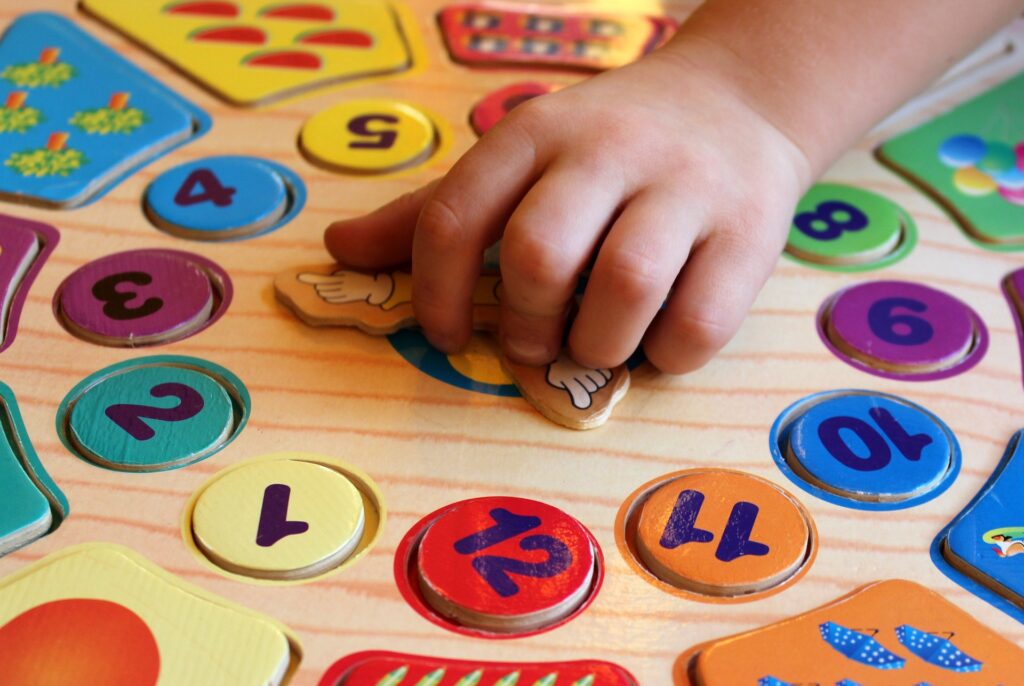
The first step in teaching any math skill is Number Recognition. Numbers are everywhere and learning how to correctly identify them is one of the most important foundational skills we can teach our children.
There are many different ways to teach young children number identification. First, we must differentiate between learning to identify numbers, learning to count by memorization, and learning to count objects.
Number Identification
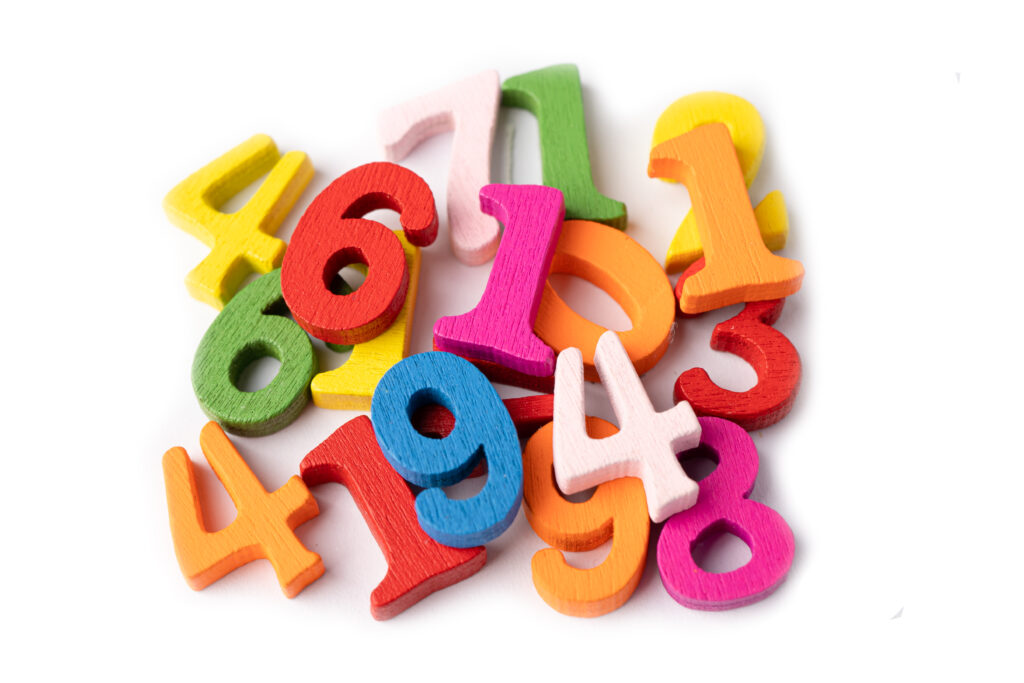
Number Identification is the ability to identify a number and correspond it to a quantity. A child learns the number’s name, recognizes how the number looks, and identifies the amount it represents.
There are many ways to teach your child to recognize numbers!
#1 – Play with number toys …
puzzles, bath foam numbers, and magnetic refrigerator numbers are all fun ways to overlap playtime with learning! https://amzn.to/3ElGreE https://amzn.to/3EJt4GN
#2 – Sidewalk chalk …
The most popular number game with sidewalk chalk is hopscotch! As children navigate hopping through the numbered squares, they also learn body control and hand/eye coordination.
https://amzn.to/3tK9Iuw https://amzn.to/3Oevnon
#3 – Number flashcards …
This more traditional learning approach is very effective because children are also practicing memorization techniques. Children should sit opposite parent and focus on what number is presented one flash card at a time. Mom should say the number first, and the child repeats. Soon after, the child will begin identifying numbers alone. https://amzn.to/3hGkLC https://amzn.to/3Oevnon
Remember: Recognizing numbers can be a difficult skill for young children because some numbers look similar: 6 and 9, or 1 and 7; these numbers can be more difficult than 2, 3, 4, 5, or 8.

Counting
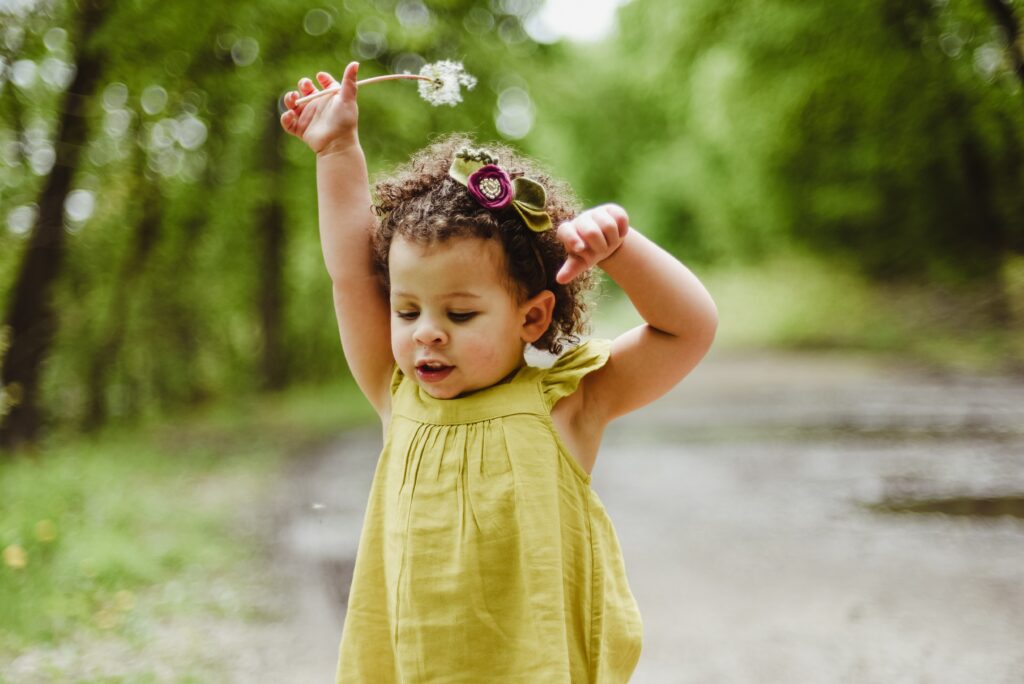
Learning to count is simply learning to say numbers in order. This is not assigning a quantity to an item or memorizing how the number looks; counting is saying a series of numbers. This ability to rote count should be taught before counting any kind of object or sequence.
By 3 to 4 years old, most children should be able to count from 1 to 10. By the age of 5, most children should be able to count to 20. Of course, the younger you begin teaching these skills to your children, the younger they will master the art of counting. Children as young as 1 or 2 years old who have had counting presented in their daily life can master this skill.
Examples of ways to teach your child to rote count include:
- Count fingers and toes
- Count as you go up and down stairs
- Count the number of words in a sentence
- Count sounds such as claps or taps.
Counting simple actions and events throughout the day is important and can be easily implemented in natural ways.
Counting Objects
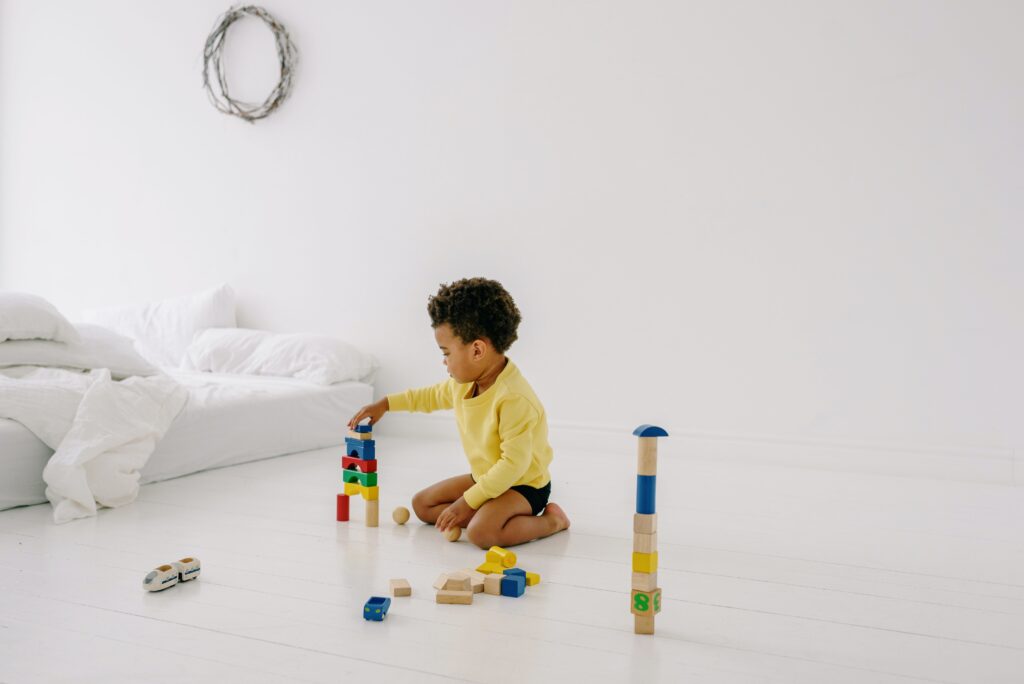
When a child counts objects, they both gain experience with and understand the meaning of numbers. Children are naturally inquisitive and enjoy grasping the concept of finding quantities. Teaching children to count objects is a simple way to develop in them a love for numbers.
The skill of counting objects is more advanced than rote counting memorization. Reciting numbers in sequence can become a mere rhyme to children, whereas counting quantity develops number sense.
Methods to teach your child to count objects are:
- Count the number of trees during a walk.
- Count the number of crackers or other easily separated food on your plate.
- Count the members of your family.
- Count the number of pieces to a favorite puzzle.
- Count the number of dogs you see at the park.
It can be a challenge for children to understand that the last number they say represents the entire amount. Be sure to always end your counting by saying ” There are 8 dogs at the park”, or ” There are 5 crackers on my plate”.
Counting and number sense are cognitive skills that will help young children understand their world. Children will learn the meaning of numbers, learn problem-solving skills, and learn to think creatively.
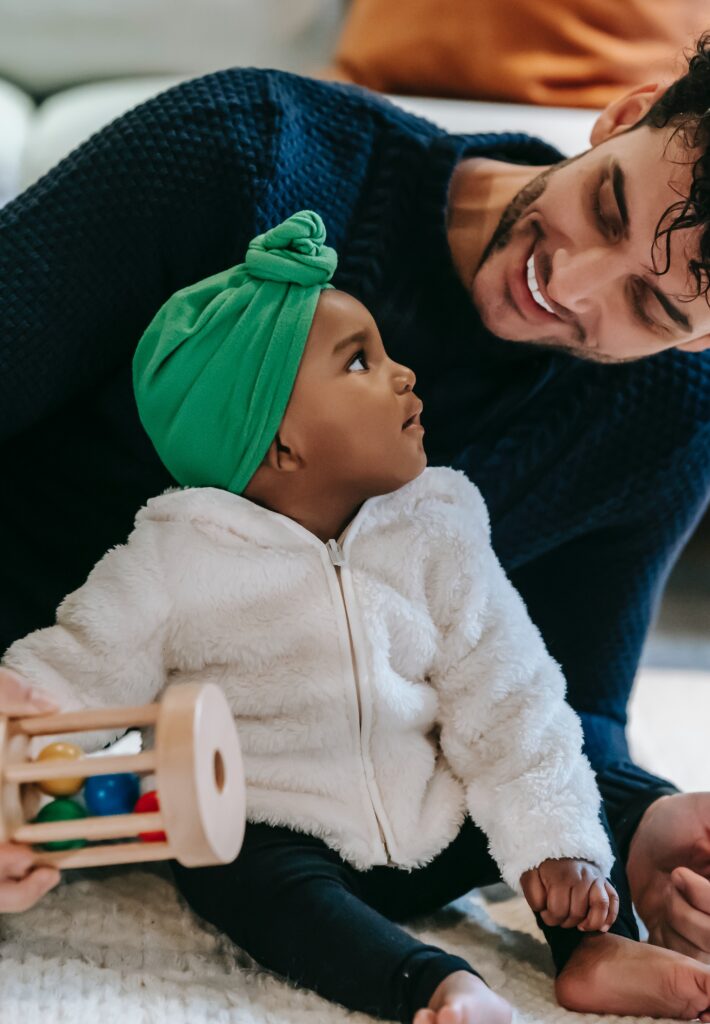
This post contains affiliate links, which means I may receive a small commission, at no cost to you, if you make a purchase through a link.


